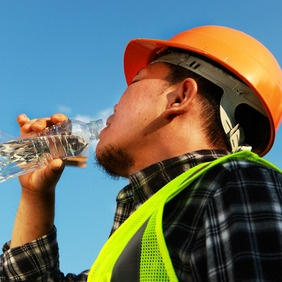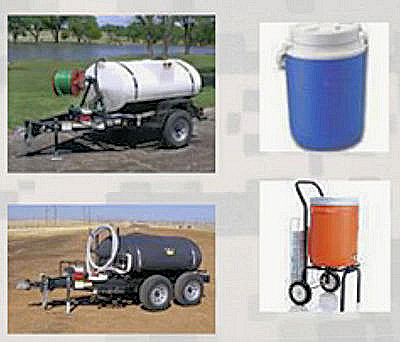02.C Drinking Water.
02.C.01
An adequate supply of potable water must be provided in all places of employment, for both drinking and personal cleansing.

Drink clean water often.
- Drinking water must be provided, whenever possible, from a local municipal water supply that is in compliance with federal, state, and local drinking water standards.
- When drinking water is obtained from an on-site well, the water must be tested and the system supplied in accordance with the Safety Drinking Water Act, 40 CFR 141-143, and any state or local drinking water regulations.
- If water is not available from a local municipal water supply or on-site well, a temporary potable water system must be provided from a licensed drinking water source.
There are a great variety of types of drinking water storage containers. All must be regularly cleaned.
- Outside the Continental Unites States (OCONUS), drinking water at military fixed facilities must be provided in compliance with country-specific Final Governing Standards (FGS). In the absence of FGS, the National Primary Drinking Water Regulations (NPDWR) as outlined in the Overseas Environmental Baseline Guidance Document (OEBGD), Department of Defense Instruction (DODI) 4715.5-G must be followed. In addition, sanitary control and surveillance of water supplies and chlorination and fluoridation must be conducted according to applicable Department of Defense (DoD) Component guidelines, or if more stringent, the host nation requirements.
- Drinking water on all Army floating vessels must be provided according to 40 CFR 141 and Chapter 6 of Navy Medical (NAVMED) P-5010. Drinking water and water for washing on all Army floating vessels must be provided from a potable water source which meets the federal and state requirements or, if generated on the vessel, must be tested and must meet the federal and state drinking water requirements.
- (1) All hoses, pumps, and valves, must be dedicated to potable drinking water only and must be rinsed before each use.
- (2) Before connecting at shore side, the supply water should be flushed for 30 seconds.
- (3) After transfer is complete, the vessel hose must be removed first, then the shore side hose removed, and the supply source must be flushed again and capped.
- (4) Drain all hoses, pumps, and valves after each use.
- (5) Storage tanks on vessels must be either chemically or mechanically disinfected when the water fails to meet two consecutive drinking water tests.
02.C.02
Cool drinking water must be provided during hot weather.
Knowledge Check Choose the best answer for the question.
2-2. What must be conducted if water fails to meet two consecutive drinking water tests in storage tanks on vessels?
You forgot to answer the question!

